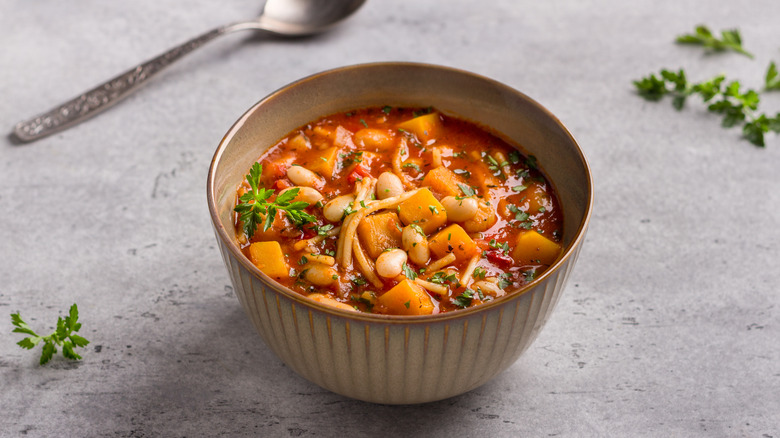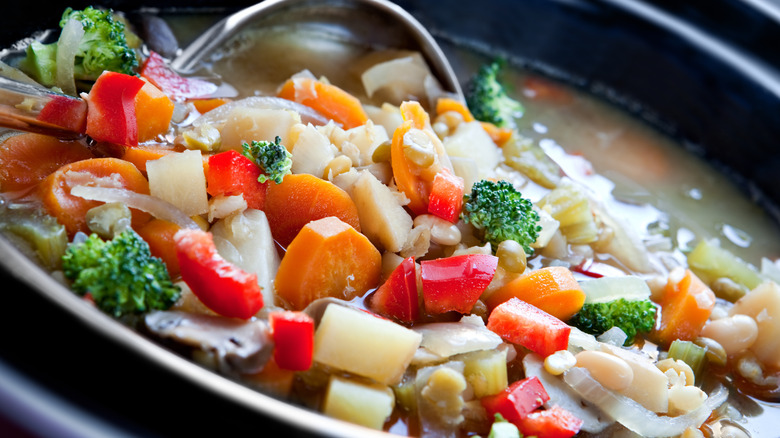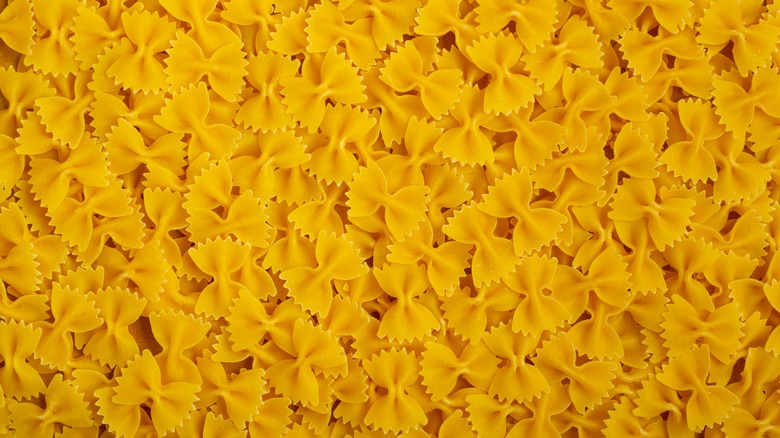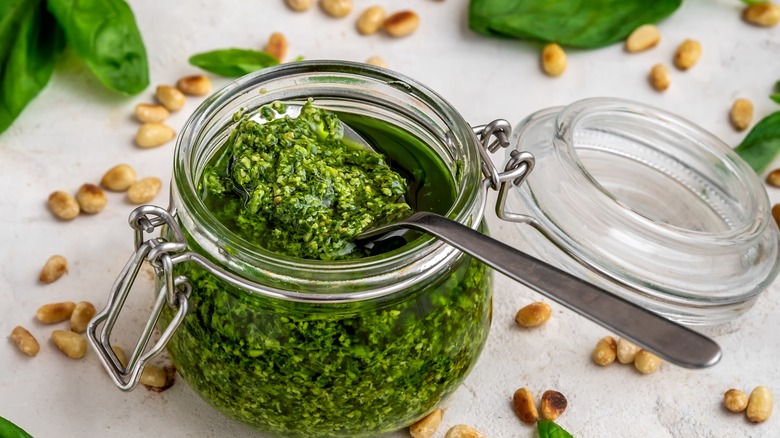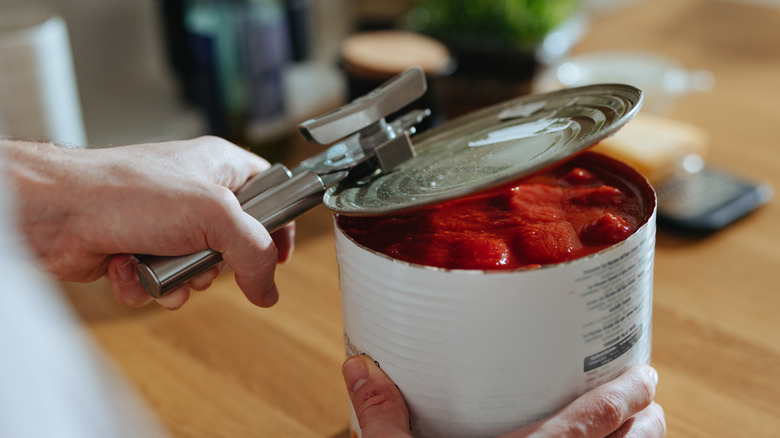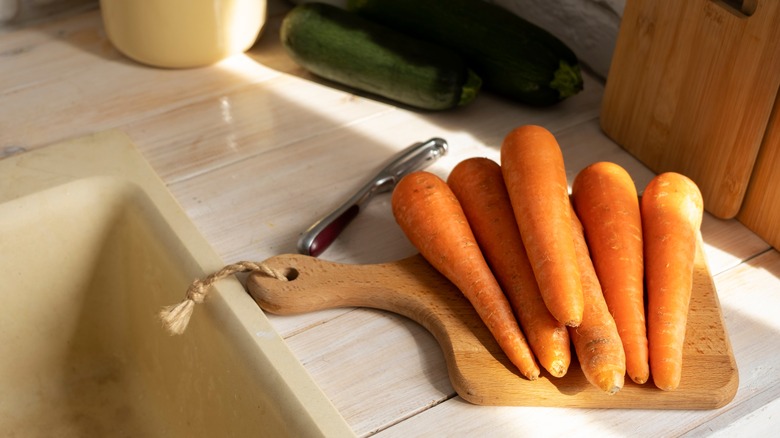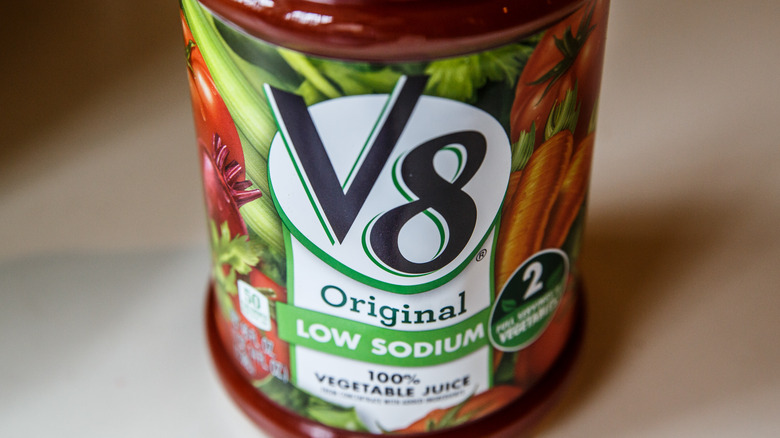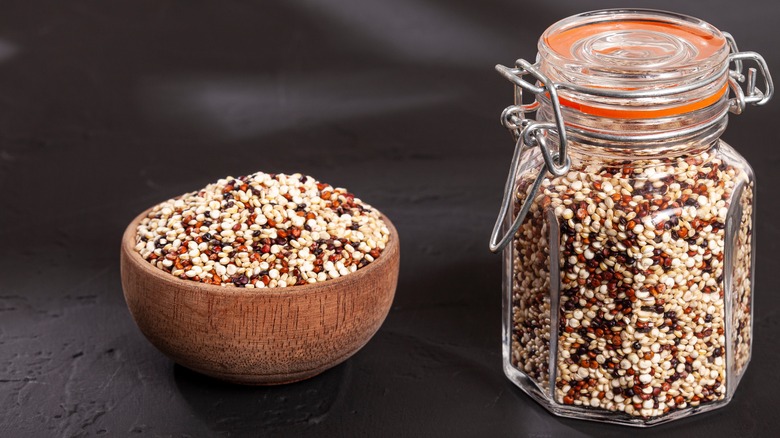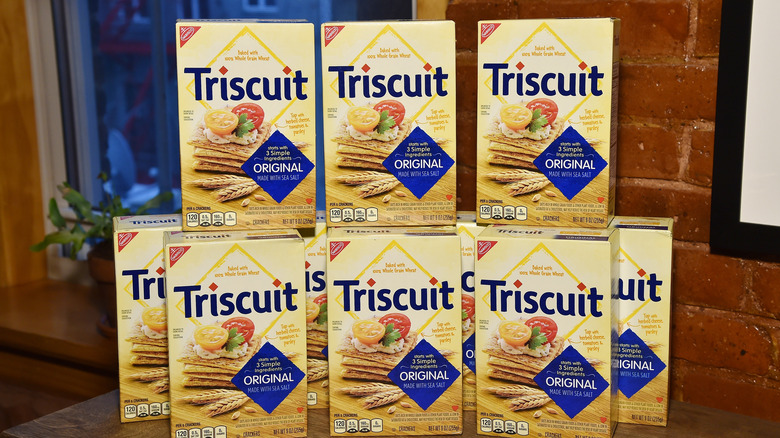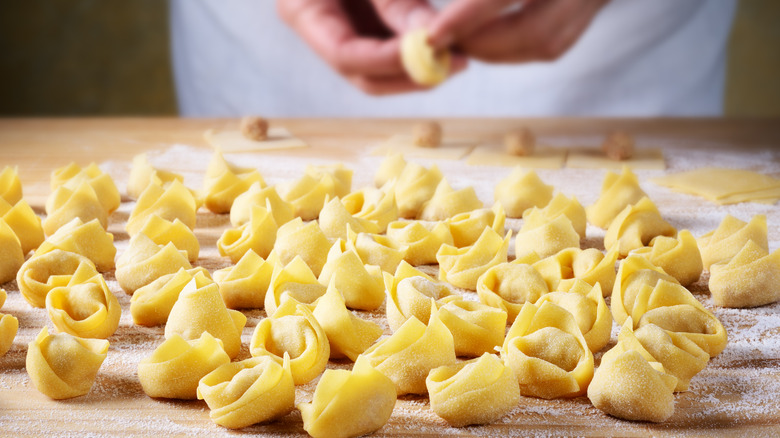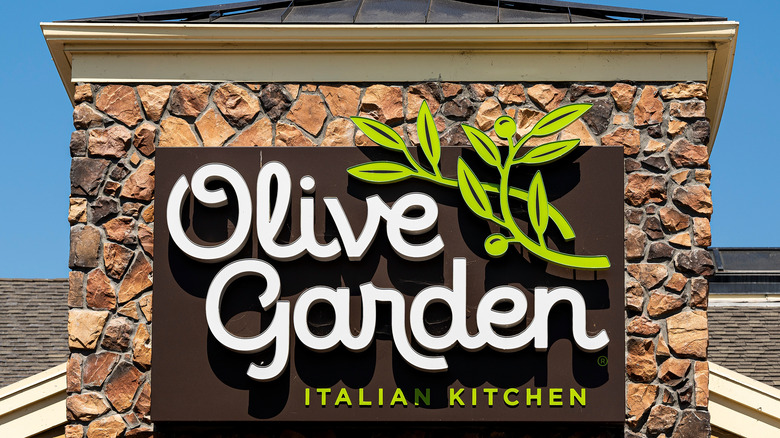11 Tips You Need For The Best Homemade Minestrone Soup
Minestrone, a hearty and wholesome Italian soup, is made with some of the most simple and basic ingredients known to humanity. Yet the result is somehow a masterpiece, illustrating that when made properly, food can be much more than the sum of its parts. Not only that, but minestrone can be incredibly versatile. While a typical recipe might include potatoes, carrots, and celery, you can still make a perfectly good minestrone by substituting those ingredients with barley, fennel, and leeks. Equally, don't be afraid to add leafy vegetables or spicy items. If it looks like minestrone and tastes like minestrone, it's minestrone — carrots or not.
And precisely because minestrone is so adaptable and adjustable to seasonal availability, it can be served at any time of the year. (In truth, fall or winter is where it truly shines.) Its broth, rich in flavor and depth, is peerless when it comes to warming you up when it's cold outside, and there's always something comforting about the idea of being able to include all your favorite ingredients in a dish. A basic minestrone involves sauteing onions, carrots, and celery in olive oil, followed by the addition of broth, tomatoes, beans, and rice. But there are a number of other ways to make your minestrone even better.
Use a slow cooker to blend flavors
If you've ever made fresh chili or Bolognese sauce only to find that it tasted 10 times better the next day, you'll know just how important it can be to let a soup sit in its own juices for as long as possible just to get those flavors to blend and deepen. This is why a slow cooker is handy for minestrone. It can allow you to get those flavors brewing without having to stand over your stove for half a day. Or to wait until the next day for maximum flavor.
To make this magic happen, simply dump your crushed tomatoes, vegetable broth, diced carrots, sliced celery, chopped onions, bay leaves, dried oregano, dried thyme, minced garlic, and seasoning into a large slow cooker. Set it on high and allow the contents to cook, covered, for about 3 hours. Just as you're starting to get hungry for dinner, remove the lid and add kidney beans, great Northern beans, and a small-shaped pasta, like penne, ditalini, or fusilli. Cook for another 30 minutes before adding baby spinach. Wait for this to wilt slightly before serving your easy, flavorful minestrone soup topped with some freshly grated Parmesan cheese.
Include pasta
One of the great things about minestrone is that it's healthy and filling all at once. That's because many recipes include pasta, which helps satiate your tummy as it absorbs all those good nutrients from the vegetables. And you can add as much pasta as you like –- as long as it's not so much that it absorbs all the water and takes over the soup.
Another element to remember is that the pasta of your choice should be small in shape. No long and curvy spaghetti or tagliatelle. Slurping these straight out of soup would be decidedly messy and might even lead to burns as the hot liquid goes flying everywhere. Instead, stick with ditalini or farfalle. If you're making this for small children, you could also opt for any type of pastina, a broad category of pasta that comes in super small shapes.
The timing of your pasta addition also matters. The simplest and most logical process may seem to just cook the pasta directly in the minestrone water until done; this idea goes haywire once you remember that pasta tends to soak up water, essentially continuing to cook in the juices until it's in your mouth. Several hours –- or, in the case of leftovers, days -– might have passed during this period, leaving you with a mushy or gooey pasta consistency. To avoid this unpleasant outcome, simply cook your pasta separately and add it to your minestrone just before you eat it.
Top with homemade pesto
Many homemade items tend to pack more flavor than their store-bought counterparts, and this is especially true of pesto. A jar that has been sitting on a shelf for months is no match for the flavor punch packed by the combination of newly grated Parmesan, fresh garlic, and just-plucked-from-the-garden basil. This is why we strongly recommend using homemade pesto –- or something close to it –- to add flavor to your minestrone soup.
But first, let's talk about the basics of adding pesto to minestrone. As Ina Garten will tell you, this ingredient — added to your soup just before serving — can help add a spicy, bright flavor thanks to its raw garlic and basil. Garten's recipe calls for store-bought pesto, but make no mistake: This better be good quality store-bought pesto, or else. In other words, look for this ingredient in the refrigerated section and make sure it is freshly made. Anything that contains preservatives and that has been sitting in a jar next to the canned tuna is not going to cut it. In Martha Stewart's minestrone, she remedies this potential faux pas by recommending using homemade pesto in the soup. Luckily, it's a simple and easy thing to make, especially if you follow this bright and fresh pesto recipe.
Double up on canned tomatoes
Canned tomatoes are an essential ingredient in any minestrone recipe, but the choice of canned tomatoes, the amount to include, and the moment when you add them are all important factors to consider as you work your way through your recipe. First of all, to maximize the effects of the tomatoes, it helps to add two types: Use both crushed and diced canned tomatoes in your minestrone. This allows you to enjoy the textural benefits of the diced tomatoes while also infusing the whole soup with their flavor via the crushed tomatoes. The crushed tomatoes will cook down and seep into every nook and cranny of the soup; the diced tomatoes will retain their texture and give you something to bite into. Just make sure you select a good quality brand that won't fall apart in the pot.
But don't forget that even those diced tomatoes will eventually turn to mush if cooked for too long, which is why we recommend that you add tomatoes to your soup towards the end of the recipe –- about 20 minutes before you're ready to take the minestrone off the heat. Not only will your tomatoes come out with a fresher flavor and firmer texture, but the acidity contained within them won't halt the cooking process, which could lead some of your vegetables or pulses to turn out undercooked, as the high pH levels in tomatoes can keep them from breaking down and softening.
Give each vegetable its due
One of the appeals of a good minestrone is that you can throw all your ingredients in one pot and let them simmer away as you relax and read a book. And no one will judge you if you want to just keep doing that. But if you want to step up your game, you might consider adding your vegetables in batches, giving each one their due and preparing them in the best possible way for individual needs. In particular, we suggest including each vegetable in your minestrone based on how long it takes to cook. Carrots, for instance, take a while to break down and soften, but spinach can wilt in a matter of seconds.
As such, for a minestrone that hasn't completely turned to mush, it's best to add the root vegetables, like carrots, at the beginning. Save the softer items, like zucchini, for the end. Although you want all your vegetables to be thoroughly cooked, a slight crunch can go a long way toward improving texture, flavor, and leftover appeal. Although this method requires paying a bit more attention to your stove -– remembering to go back and add this or that vegetable as your soup cooks -– you can still keep things simple by throwing everything into the same pot.
Bring in a splash of V8 juice
The versatility of minestrone means that it can accommodate a wide range of ingredients in an even wider range of proportions. But what we aim to do with each and every meal we make is go beyond what is simply accommodating and reaching instead for the excellent. This is what you'd be doing if you added a splash of V8 juice to your minestrone. This is not just a fun little thing to do to use up some expiring juice. It will actually improve the flavor of your minestrone soup.
To deploy V8 to its maximum effect, mix V8 juice and water, or chicken broth, in equal parts and add this combination to your recipe at the point where it calls for the inclusion of the broth. If you're worried about the V8 dialing up the acidity too much, simply adjust the recipe to include fewer canned tomatoes. You can also get creative with your selection of V8 varieties and go for a hot and spicy version. Meanwhile, a low-sodium version might be just what you need to keep the flavor strong and the blood pressure low.
Spice it up with sriracha
There are many ways to easily spice up a soup, but one of the best by far is to add a touch of sriracha. Sriracha is a secret minestrone ingredient Valerie Bertinelli employs in her soup. She is known to stir a few spoonfuls into her soup right before serving it, adding a splash of fire to an already savory pot. It's just a quick step and perfect for when you forget to add hot chili flakes or spicy V8 juice earlier in the recipe.
Bertinelli's recipe for minestrone includes garlic, onions, red peppers, carrots, zucchini, tomatoes, beans, and red wine vinegar, but adding chili sauce is a trick that would work with any combination of minestrone ingredients. Additionally, if you prefer an ingredient that stays on theme with the origins of minestrone, consider working with Calabrian chili paste. Bertinelli recommends rounding out the soup with a simple grilled cheese sandwich, and if you don't plan on including pasta in your minestrone, this is the ideal food combination to keep you full on cold winter afternoons.
Consider quinoa for a nutritious swap
Small-sized pasta and diced potatoes are the most common types of starches to include in a hearty minestrone, though you don't have to limit yourself to what everyone else is doing. In fact, there's a whole other world of grains out there that work exceedingly well with minestrone, some of which are more nutritious than others. We suggest considering adding quinoa as a way to fill out your soup and increase your intake of key nutrients such as protein, folate, and fiber — and to make your soup gluten-free.
Indeed, this may be one reason why Giada De Laurentiis uses this grain in her minestrone. Another reason may be that you can easily swap in quinoa for any other starchy ingredient, no matter which recipe you're following. And adopting any of Giada's recipes in this department won't lead you astray. In fact, another excellent minestrone tip that De Laurentiis recommends is to use chicken broth if you're including potatoes or quinoa and beef broth when adding pancetta. This is because the chicken broth lends itself well to absorption by whichever starch you choose, while the pancetta's strong, fatty flavor can be complemented by a liquid that is just as strong in flavor, such as beef broth.
Fortify it with grated cheddar and Triscuits
While most minestrone recipes call for a grated Parmesan topping at the end, there is no reason why you can't switch up the type of cheese for a flavor that is more local to your parts. Some Brits seem to have ascribed to this logic, such as celebrity chef Gordon Ramsey. As a go-to soup that Ramsay's daughter loves, the chef's minestrone version uses very British cheddar as a swap for the traditional Parmesan.
The good news here is that this type of cheese will still go well with pretty much any minestrone ingredients you wish to include. Whether you're sticking to the basics, like carrots, celery, and tomatoes, or going wild with additions like zucchini, quinoa, or kale, the grated cheddar will provide a welcome complement to your dish. And you can make it even more special, as Ramsay does, by also adding some Triscuits. All you have to do is grate some mature, sharp cheddar on top of some Triscuits and grill them or toast them in your toaster oven, then top your prepared soup with the cheesy Triscuits as if you were adding croutons.
Turn it green
Minestrone tends to come in a deep brown, sometimes reddish color due to the mixture of various vegetables and a strong tomato presence. But since minestrone can include pretty much any type of vegetable and still fit neatly into this category, there's no reason why you shouldn't experiment with turning it green every once in a while. Kermit the frog famously said "it's not easy being green," but we beg to differ.
One of our favorite green minestrone soup recipes comes from the brilliant mind of British chef Nigella Lawson, whose version goes heavy on the green vegetables, including when it comes to the pasta, which in this case is ricotta and spinach-filled tortelloni. Prepare this dish by sauteing the thyme before adding frozen peas, leeks, diced potatoes, celery, zucchini, and green beans. Cover these with water and cook until everything is tender. Once even the potatoes have cooked through, remove some of the vegetables along with some water, zap them in a blender with some basil and Parmesan, and pour the creamy mixture back into your pot with along with some beans and tortelloni. In the spirit of minestrone, you can make this flavorful and visually appealing version of the soup with any green vegetables that come to mind.
Prepare it á la Olive Garden with red wine
Beloved Italian restaurant chain Olive Garden has many flavorful dishes to offer, and their minestrone is one of them, especially as the cold season sets in. Luckily, you don't have to brave the cold and trudge through the snow when you get a craving for it. If you plan ahead and stock up on the ingredients, you can make it at home by following a copycat Olive Garden minestrone soup recipe.
Start by sauteing the onion, zucchini, and celery in some olive oil. Once these are cooked, add the garlic and then the red wine, making sure it cooks down. Add the broth, canned tomatoes, tomato paste, and seasoning, and allow everything to bubble away for a few minutes, gathering strength. Finally, pour in the white beans, kidney beans, and pasta. Once the pasta is al dente, it's time to add some fresh spinach. Serve your soup topped with chopped parsley, and thank the recipe developer for all the trial and error she put in before finally reaching that signature Olive Garden flavor. You can also be glad that this recipe doesn't take as long to prepare as many other minestrone soups. You may notice that between preparation time and cooking time, you should be done with the whole thing in less than 30 minutes.
